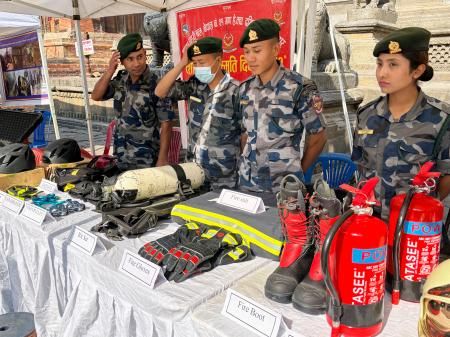Remembering 2015: Nepal Earthquake's Impact - A Decade of Recovery and Resilience
On April 25th, 2015, a devastating earthquake struck Nepal, leaving an indelible mark on the nation and its people. Ten years later, we remember the immense loss and reflect on the remarkable journey of recovery and resilience. This article explores the earthquake's impact, the subsequent relief efforts, and the ongoing challenges Nepal faces in rebuilding its future.
The Devastation of 2015: A Nation Shaken
The 7.8 magnitude earthquake, centered near Kathmandu, caused widespread destruction. The immediate aftermath was catastrophic:
- Massive Casualties: Over 9,000 lives were lost, and tens of thousands were injured. The death toll continues to impact families and communities to this day.
- Widespread Infrastructure Damage: Historic temples, ancient cities like Bhaktapur and Patan, and countless homes were reduced to rubble. Critical infrastructure, including hospitals and schools, was severely damaged, hindering rescue and recovery efforts.
- Economic Disruption: The earthquake dealt a crippling blow to Nepal's economy, impacting tourism, agriculture, and overall development. The cost of rebuilding was, and continues to be, astronomical.
Beyond the Numbers: Human Stories of Loss and Survival
The earthquake's impact extended far beyond statistics. Countless stories emerged of loss, survival, and the unwavering spirit of the Nepali people. These personal accounts highlight the human cost of natural disasters and the importance of empathy and global solidarity. [Link to a relevant news archive or documentary showcasing personal stories].
The Global Response: Aid and Recovery Efforts
The international community responded swiftly to the crisis, providing substantial aid in the form of:
- Emergency Relief: Search and rescue teams, medical supplies, food, and shelter were rapidly deployed to affected areas.
- Reconstruction Efforts: International organizations and governments collaborated on long-term rebuilding projects, focusing on infrastructure, housing, and community development.
- Disaster Preparedness Initiatives: The earthquake underscored the need for improved disaster preparedness in Nepal. Subsequent efforts focused on strengthening building codes, early warning systems, and community-based disaster risk reduction strategies.
Challenges in the Long Road to Recovery
Despite the significant aid received, Nepal's recovery has been a complex and protracted process. Challenges include:
- Political Instability: Political hurdles and bureaucratic delays hampered efficient aid distribution and reconstruction efforts.
- Geographic Challenges: Reaching remote and mountainous areas remained a significant logistical challenge, delaying aid delivery and hindering recovery.
- Corruption Concerns: Allegations of corruption and mismanagement of aid funds added to the complexities of the recovery process.
Nepal Today: Resilience and the Path Forward
A decade later, Nepal has made significant strides in rebuilding, but challenges persist. The country continues to invest in:
- Seismic Retrofitting: Strengthening existing structures to withstand future earthquakes is a critical ongoing endeavor.
- Sustainable Development: Balancing economic development with environmental protection and disaster risk reduction is crucial for Nepal's long-term stability.
- Community Engagement: Empowering local communities to participate in the rebuilding process is vital for ensuring sustainable and equitable recovery.
Nepal's journey of recovery highlights the importance of international cooperation, robust disaster preparedness, and community resilience in the face of adversity. Remembering the 2015 earthquake serves as a poignant reminder of the devastating impact of natural disasters and the enduring strength of the human spirit.
Keywords: Nepal Earthquake 2015, Nepal Earthquake Impact, Nepal Earthquake Recovery, Nepal Earthquake Relief, Kathmandu Earthquake, Nepal Reconstruction, Disaster Relief, Seismic Resilience, Disaster Preparedness, Community Resilience
Call to Action: Learn more about organizations supporting Nepal's ongoing recovery efforts and consider contributing to their work. [Link to relevant charities or organizations].
